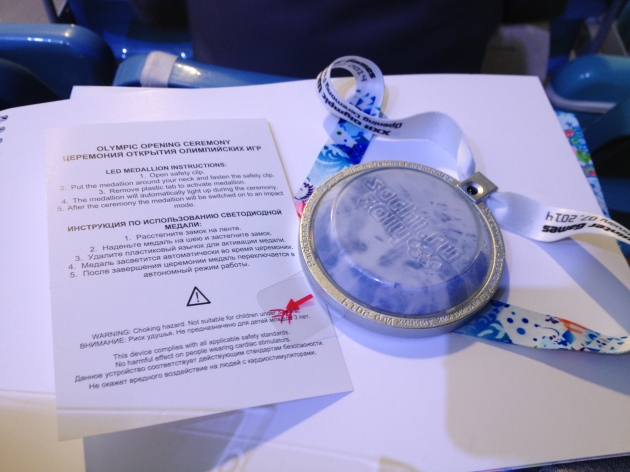What's inside the 2014 Olympic fan medal?
All spectators of the opening and closing ceremonies of the Olympic Games were given smart LED medals, with remote control, of their rehearsals. These accessories should automatically light up in different colors during the ceremony. After the show, every spectator could take the medal with him as a souvenir. Taking into account the fact that the Fisht stadium is designed for 40 thousand spectators, and the need for two rehearsals for each official ceremony, we can estimate the number of fan medals produced in 200,000 pieces.
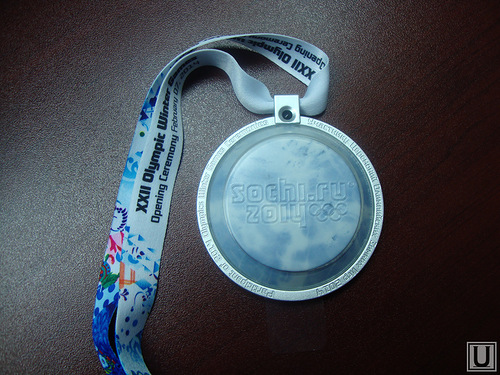
URA Photos
')
I wonder what's inside? Under the cut a small opening medals.
Upon completion of the ceremony, the medal switches to offline mode. In offline mode, the medal responds to clicks on the body with short flashes of different colors.
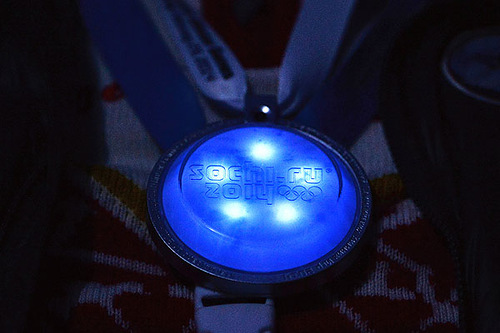
I got the medal after attending the opening rehearsal. Therefore, it is with a nut (so that it does not fall from the back of the chair?) And not on the color, but on the white ribbon.

The back side of the coin. All components are fastened with six miniature screws. In my copy there are only four of them.

Front translucent panel close-up.
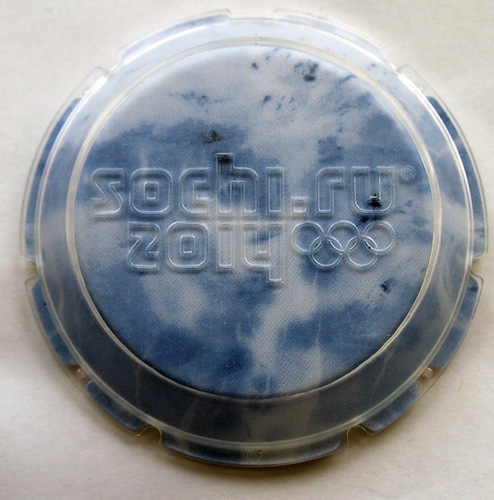
She, the view from the back side.

The ring on which the filling of the medal and the ribbon is fastened, the back cover and the medals themselves.
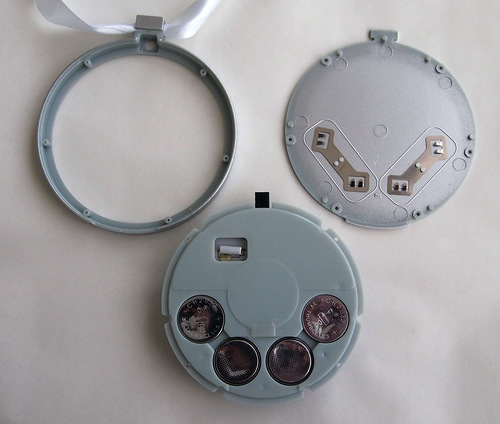 .
.
It turns out that the medal is quite voracious and is powered by four 3-volt batteries. By the way, my life on standby was still a couple of weeks after the ceremony.
On the inside of the case, a single part is visible (presumably a capacitor) mounted on the back of the printed circuit board.

Hayrez , on which at the top of the medal on the back of the remote control sensor are visible the figures "153".
And now without batteries.

The back cover of the medal, view from the inside. Contacts for connecting batteries.
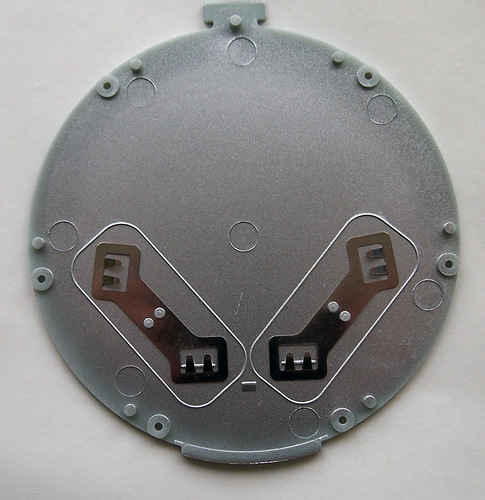
Under the transparent panel there is a single-layer, single-sided printed circuit board, on which five LEDs, a chip and a harness are soldered.

Circuit board close-up. The inscriptions "(C) ESKI Inc. 09/2013", .
.
Apparently, the medal was designed by the Canadian company of the same name, and made in China.
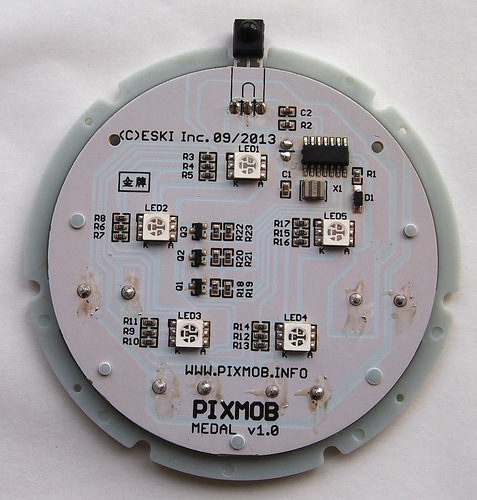
Hayrez
Chip close-up. Visible is the ATMEL1338 ATTINY44A SSU label. Directly not googlitsya.
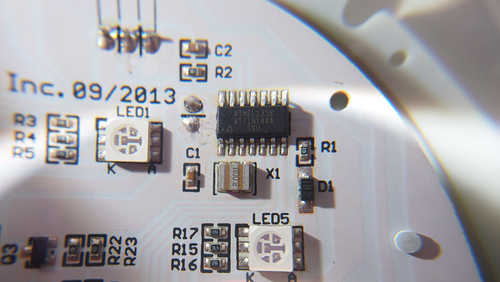
Hayrez
PS There are craftsmen who recognize the chip and explain the protocol and the way (probably the infrared sensor) to control the medal? It would be interesting to learn how to control it through infrared. It is not entirely clear exactly how the medal detects clicks on the body.

URA Photos
Photo of RBC
')
I wonder what's inside? Under the cut a small opening medals.
Upon completion of the ceremony, the medal switches to offline mode. In offline mode, the medal responds to clicks on the body with short flashes of different colors.

I got the medal after attending the opening rehearsal. Therefore, it is with a nut (so that it does not fall from the back of the chair?) And not on the color, but on the white ribbon.

The back side of the coin. All components are fastened with six miniature screws. In my copy there are only four of them.

Front translucent panel close-up.

She, the view from the back side.

The ring on which the filling of the medal and the ribbon is fastened, the back cover and the medals themselves.
 .
.It turns out that the medal is quite voracious and is powered by four 3-volt batteries. By the way, my life on standby was still a couple of weeks after the ceremony.
On the inside of the case, a single part is visible (presumably a capacitor) mounted on the back of the printed circuit board.

Hayrez , on which at the top of the medal on the back of the remote control sensor are visible the figures "153".
And now without batteries.

The back cover of the medal, view from the inside. Contacts for connecting batteries.

Under the transparent panel there is a single-layer, single-sided printed circuit board, on which five LEDs, a chip and a harness are soldered.

Circuit board close-up. The inscriptions "(C) ESKI Inc. 09/2013",
"www.pixmob.info","PIXMOB medal v1.0" and hieroglyphs
 .
.Apparently, the medal was designed by the Canadian company of the same name, and made in China.

Hayrez
Chip close-up. Visible is the ATMEL1338 ATTINY44A SSU label. Directly not googlitsya.

Hayrez
PS There are craftsmen who recognize the chip and explain the protocol and the way (probably the infrared sensor) to control the medal? It would be interesting to learn how to control it through infrared. It is not entirely clear exactly how the medal detects clicks on the body.
Source: https://habr.com/ru/post/214487/
All Articles
